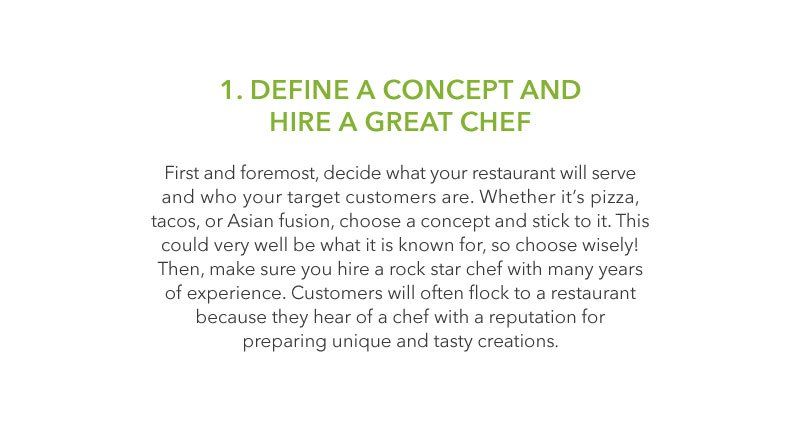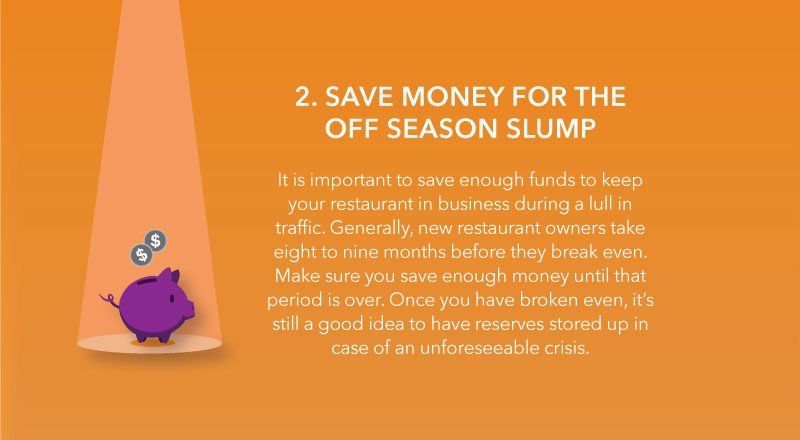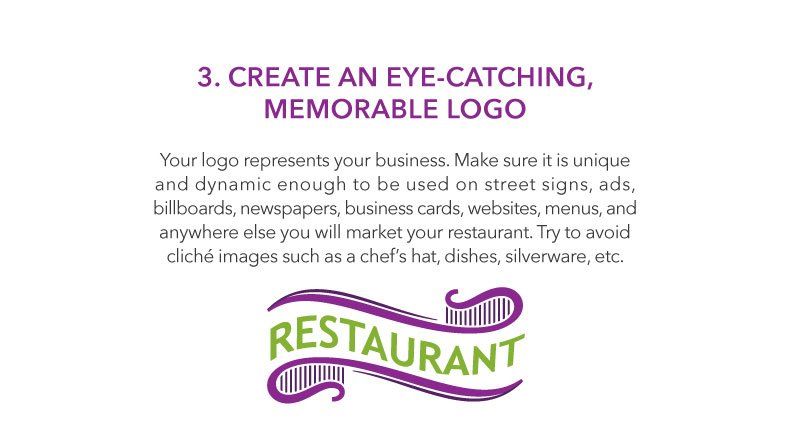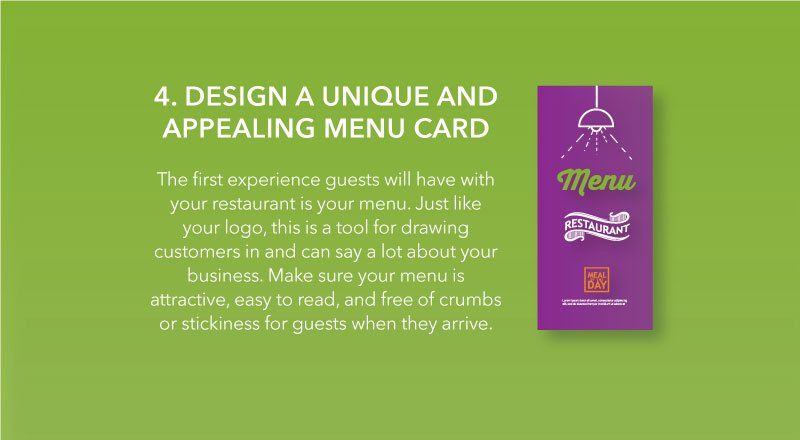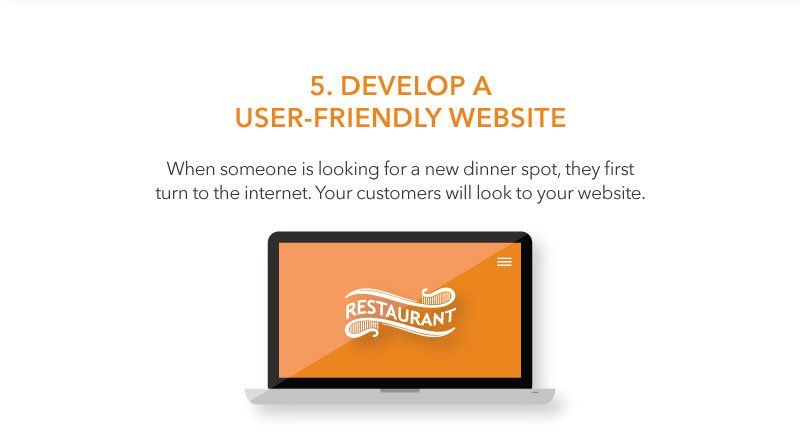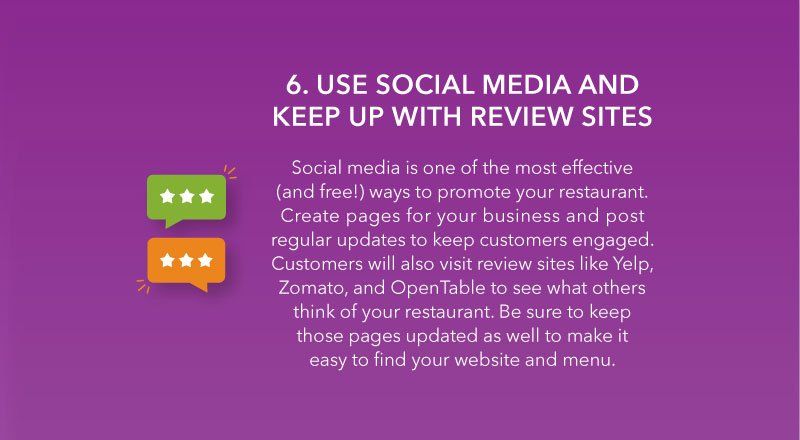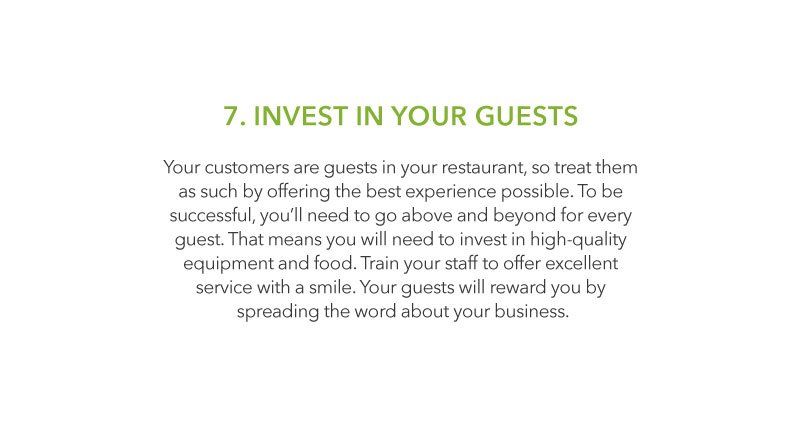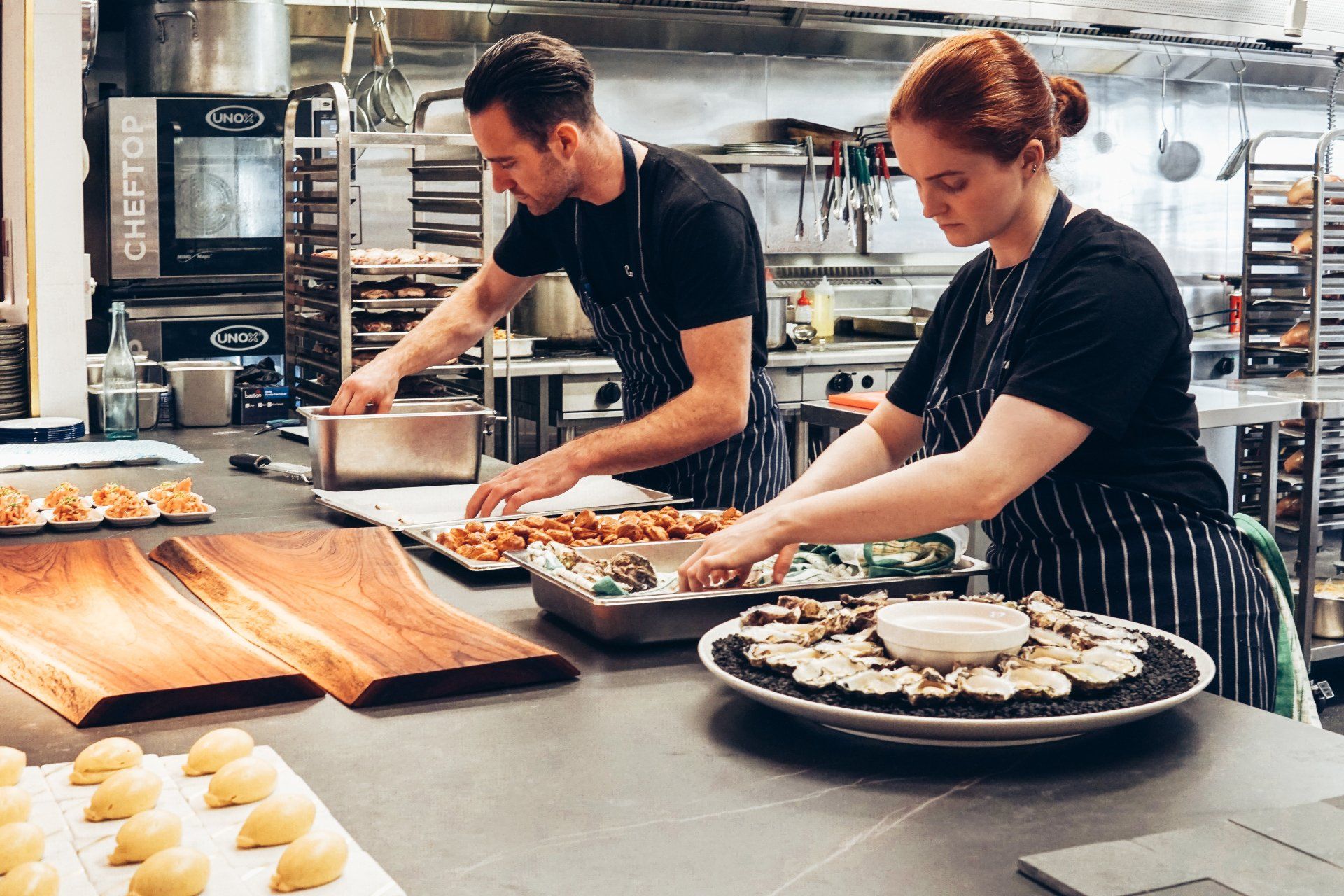Your Complete Guide to Building a Restaurant Business
Are you dreaming of starting your own restaurant business? Before taking the steps to make that dream a reality, there are a few tips and facts you should know. Let’s begin!
7 Basic Tips and Tactics for Successful Bar & Restaurant Management
Opening a new restaurant can be a risky business endeavor.
There’s a risk that customers won’t enjoy the food, post negative reviews, and prevent future customers from visiting. There’s a risk that the location you’ve chosen won’t turn out to be as great as you thought, and won’t see much foot traffic. There’s risk of a fire that could completely ruin your business.
You get it, there’s a good amount of risk involved. But, don't let these potential threats discourage you! You can still pursue your dream. Plus, using these seven tips to do so can help put your mind at ease!
1. Define a concept and hire a great chef
First and foremost, decide what your restaurant will serve and who your target customers are. Whether it’s pizza, tacos, or Asian fusion,
choose a concept and stick to it. This could very well be what it is known for, so choose wisely! Then, make sure you hire a rock star chef with many years of experience. Customers will often flock to a restaurant because they hear of a chef with a reputation for preparing unique and tasty creations.
2. Save money for the off-season slump
It is important to save enough funds to keep your restaurant in business during a lull in traffic. Generally, new restaurant owners take eight to nine months before they break even. Make sure you save enough money until that period is over. Once you have broken even, it’s still a good idea to have reserves stored up in case of an unexpected crisis.
3. Create an eye-catching, memorable logo
Your logo represents your business. Make sure it is unique and dynamic enough to be used on street signs, ads, billboards, newspapers, business cards, websites, menus, and anywhere else you will market your restaurant. Try to avoid cliché images such as a chef’s hat, dishes, silverware, etc.
4. Design a unique and appealing menu card
The first experience guests will have with your restaurant is your menu.
Just like your logo, this is a tool for drawing customers in and can say a lot about your business.
Make sure your menu is attractive, easy to read, and free of crumbs or stickiness for guests when they arrive.
5. Develop a user-friendly website
When someone is looking for a new dinner spot, they first turn to the internet. Your customers will go to your website to book a table and review menus, so make sure it is simple, clean, and easy to navigate. Don’t forget to include important information like your contact phone and email, reservation details, menus, and more.
6. Use social media and keep up with review sites
Social media is one of the most effective (and free!) ways to promote your restaurant. Create pages for your business and post regular updates to keep customers engaged. Customers will also visit review sites like
Yelp ,
Zomato , and
OpenTable to see what others think of your restaurant. Be sure to keep those pages updated as well to make it easy to find your website and menu.
7. Invest in your guests
Your customers are guests in your restaurant, so treat them as such by offering the best experience possible.
To be successful, you’ll need to go above and beyond for every guest.
That means you will need to invest in high-quality equipment and food. Train your staff to offer excellent service with a smile. Your guests will reward you by spreading the word about your business.
Want to share these tips with your team or as a reference? Download our free infographic!
The Truth about Restaurant Profit Margins:
If you’re starting a restaurant, you need all the facts to help you be successful.
So, let’s talk profit. According to Restaurant Resource Group , the national average for restaurant profit margins ranges from about 2 to 6 percent. Full-service restaurants are on the lower end of this spectrum, with quick-service restaurants on the higher end. Those numbers are a little daunting, but we believe with hard work and some creative thinking, you can still be successful.
How to Calculate Your Restaurant's Gross Profit
Gross profit is the difference in value between the menu price of a meal and the cost of the ingredients and materials used to make it.
The cost of these ingredients and materials is known as “cost of goods sold” in the world of accounting. To calculate gross profit, subtract the cost of goods sold from the price of the dish. For example, if a meal costs $100 to the customer but only $30 to create, your gross profit for that meal would be $70.
You can also calculate gross profit for your restaurant as a whole. Simply take the total sales amount for a specific period of time, and subtract the cost of goods sold for that same period of time.
For example, let’s say that the total sales for Mario & Luigi’s Pizza Shop from April to June of 2019 were $500,000 and cost of goods sold was $150,000. Simply follow the below formula to calculate the pizza shop’s gross profit:
- Gross profit = Total sales – Cost of goods sold / Total sales
- Gross profit = (500,000 - 150,000) / 500,000
- Gross profit = 350,000 / 500,000
- Gross profit = 0.70
- Gross profit = 70%
Mario & Luigi’s Pizza Shop has a gross profit percentage of 70%. This means that for every $100 spent at their shop, $70 is profit that can be used to pay for overhead and operating expenses.
If you need help figuring out your bar or restaurant’s food costs, try using this
helpful food cost calculator.
Calculating Net Profit for a Bar, Nightclub, or Restaurant:
Net profit is the amount that remains from your gross profit after you subtract things such as payroll, rent, utilities, ingredient, and equipment costs.
To calculate net profit, you will need your total sales, gains, expenses, and losses for a specific period of time.
For example, let’s say that Peach’s Ice Cream Parlor has $400,000 in revenue, $2,000 in gains, and $375,000 in expenses from April to June. Follow the below formula to calculate the parlor’s net profit:
- Net profit = (Total sales + Gains) – Expenses
- Net profit = (400,000 + 2,000) – 375,000
- Net profit = $27,000
Peach’s Ice Cream Parlor saw $27,000 in net profit from April to June.
Calculating Net Profit Percentage:
To calculate the net profit percentage for Peach’s Ice Cream Parlor, apply the formula below:
- Net profit percentage = (Net profit / Total sales) x 100
- Net profit percentage = (27,000 / 400,000) x 100
- Net profit percentage = .06 x 100
- Net profit percentage = 6%
Peach’s Ice Cream Parlor’s net profit percentage is 6%. That means for every dollar a customer spends, the parlor keeps 6 cents as a profit.
Why are Restaurant and Bar Profit Margins so Low?
Many different factors affect the bottom line for your restaurant, and all restaurants are very different. However, there are three major expenses that affect all profits, known as the “Big Three.”
- Cost of goods sold
- Labor/payroll
- Overhead/operating expenses
It’s a general rule that one third of a restaurant’s revenue is allocated to cost of goods sold, and another third to labor/payroll expenses. The remaining revenue is used to cover overhead costs, such as rent and utilities. After all these expenses are paid, it typically leaves you with around 2% to 6% in net profit.
By increasing sales volume and decreasing expenses, you can start to improve profit margins for your restaurant. Some simple ideas for improving sales volume include:
- Adjusting your menu pricing
- Updating the layout of your menu
- Improving table turnover
- Adding more seating to your restaurant
Next, let's review some tips to help you write a business plan for your new restaurant.
How to Write a Bar or Restaurant Business Plan
With our seven tips for restaurant management and profit margins in mind, you can move forward with developing an effective restaurant business plan. Here are some points to help you get started:
1. Research, research, research!
There are hundreds of thousands of restaurants in the United States alone. That’s a lot of competition! Before you develop your business plan, do some digging into the restaurant market in your area and identify your target customers.
2. Choose your concept
You’ll first need to decide what type of restaurant you plan on starting. That doesn’t mean you need a menu right away, but you should at least identify a general price point and the type of experience you plan to provide. Like we said before, your concept may be what your restaurant is known for, so make sure it’s solid.
3. Determine where you will find customers
When you’re planning the look and feel of your restaurant, don’t forget about your customers! If you want to succeed, you’ll need to plan out the best way to reach your customers and when. For example, Brewnuts donuts and beer shop in Cleveland does a great job of marketing their daily specials on Instagram and encouraging customers to stop in before they’re gone.
4. Pinpoint your ideal location
Now that you know the experience you want to provide and the customers you want to attract; find a location that fits the scene. However, keep the rent costs in mind when choosing your location. Sometimes spending a little more in marketing for your restaurant down the street can mean better profitability than paying high rent costs in the heart of downtown.
5. Dig deep into the financials
Once you are further in to developing your business plan, it will be time to get specific. Outline your prices, equipment expenses, rent, utilities, and anything else that will affect profits. As you forecast your revenue and expenses, this is where some of those formulas we shared earlier can start to come in handy.
There are plenty of resources available to help you plan, establish, and grow your business. Once you’re ready to start making money, we can help you start accepting payments and managing your restaurant.
Start Accepting Payments with Total Touch®
Total Touch is the preferred solution for leading restaurant concepts, from quick-service to fine dining. It’s more than a simple way to accept payments. With Total Touch, you can also manage inventory, employee timecards, the kitchen, bar, and more.
Take advantage of its flexibility and powerful features from the very first day you open your restaurant and you’ll be miles ahead of the competition. This complete solution offers incredible value you won’t find with Toast or Clover.
The benefits of Total Touch include:
- Choice of Payment Processor – Total Touch integrates with most payment processors, so you can work with whomever you choose. We highly recommend EMS!
- Increased Profit Opportunity – There are numerous advantages to partnering with the same company for POS software and payment processing. Choose EMS for both, and you’ll spend less time on the back-and-forth and more time selling!
- Hybrid Server and Cloud-Based Restaurant Management System– Total Touch operates on a powerful hybrid server and cloud-based system. This means you will experience less downtime and can stop worrying about internet interruptions and limited bandwidth.
Contact us today to learn more about Total Touch and the ways we can help your restaurant business grow!

